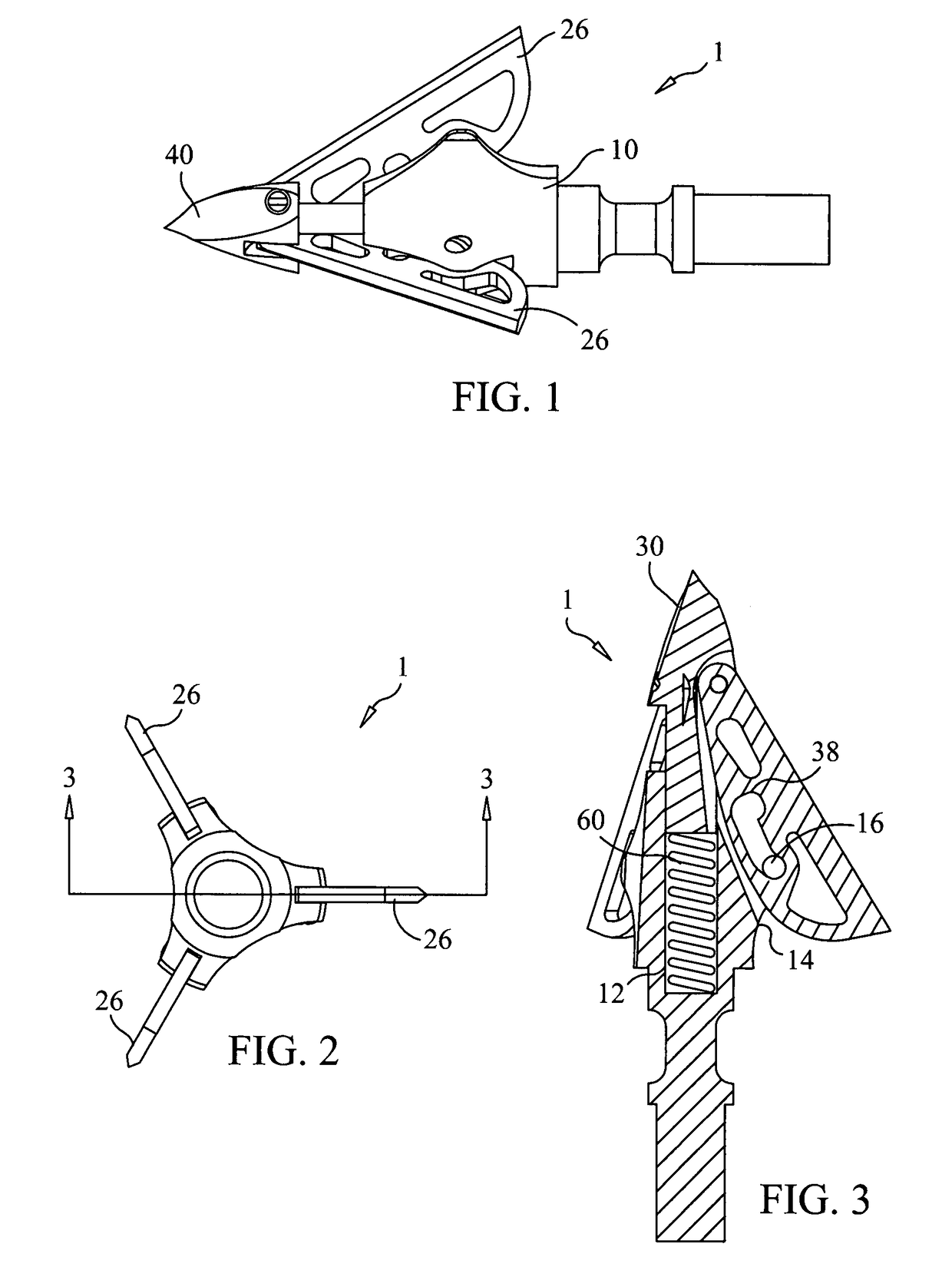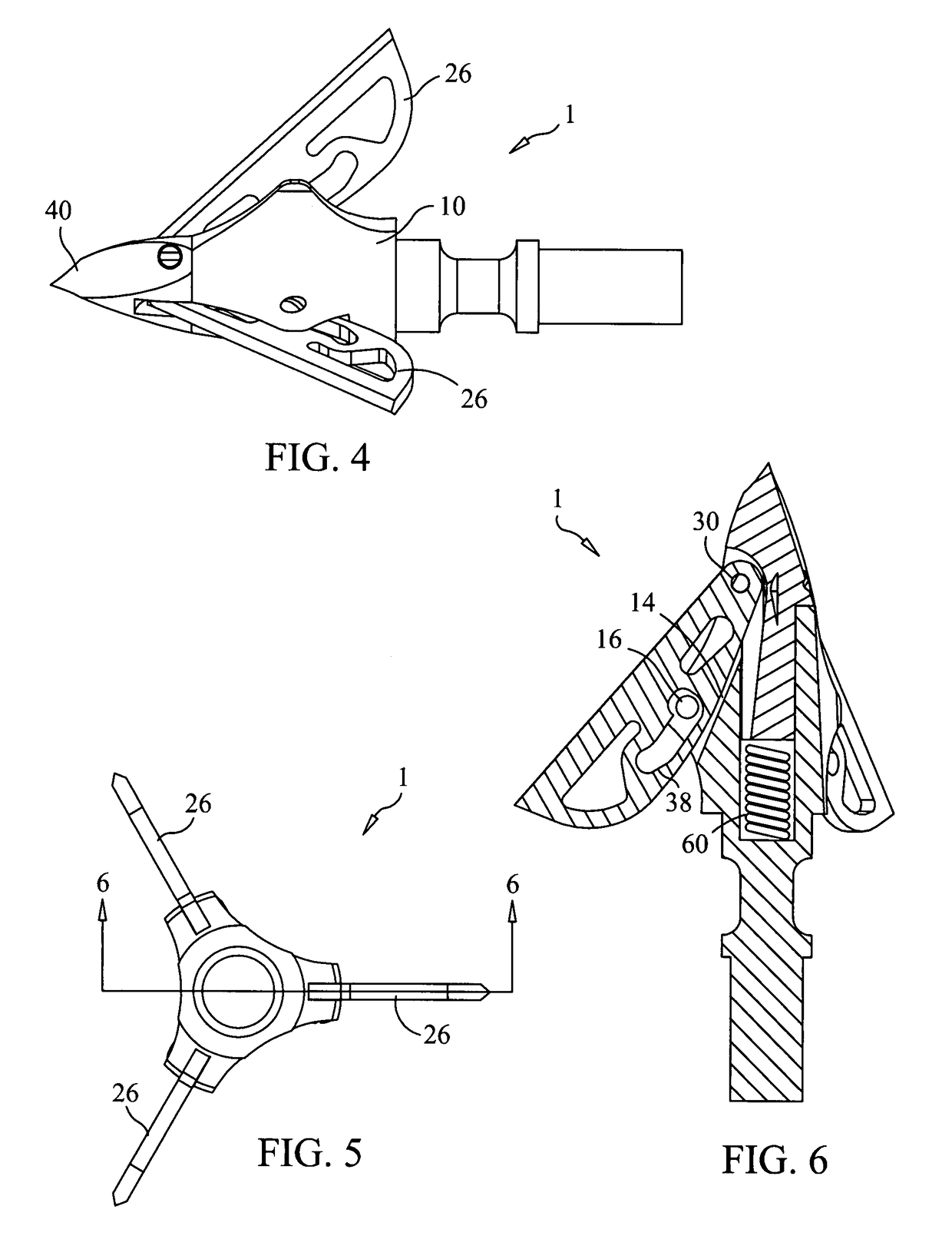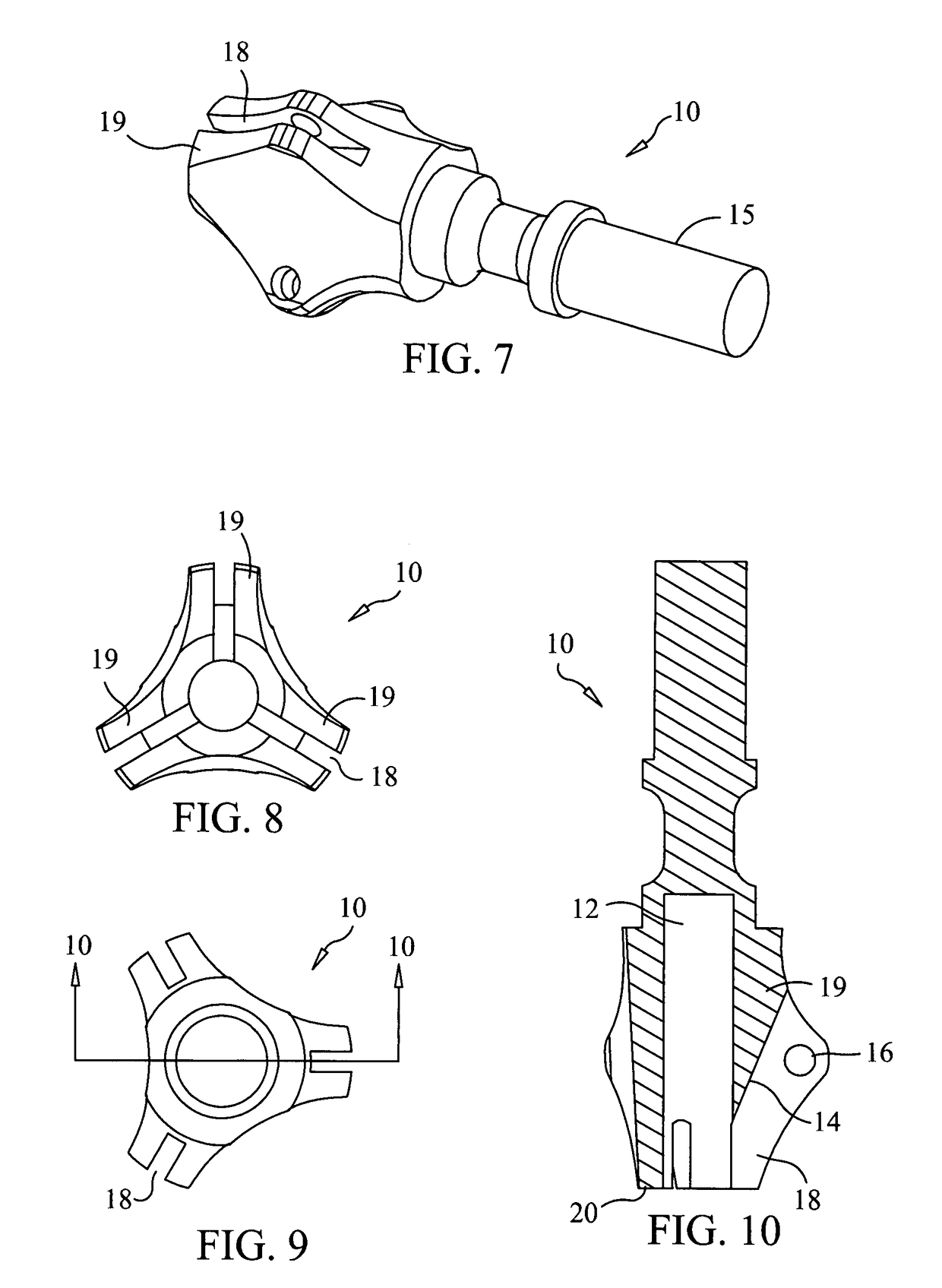Expanding, exposed-blade arrow head
a technology of exposed blades and arrow heads, applied in the field of arrow heads, can solve the problems of reducing and reducing the cutting radius so as to reduce the aerodynamic impact probability, reduce the profile, and increase the cutting diameter of the arrow head
- Summary
- Abstract
- Description
- Claims
- Application Information
AI Technical Summary
Benefits of technology
Problems solved by technology
Method used
Image
Examples
Embodiment Construction
[0068]Referring to FIGS. 1-17, a preferred embodiment the present invention is illustrated in the form of expanding, exposed-blade broadhead 1. Broadhead 1 preferably comprises ferrule 10 and a plurality of cutting blades 26 that are pivotally coupled to tip 40. In use, broadhead 1 is preferably attached to arrow 3.
[0069]Referring to FIGS. 1-3, broadhead 1 is shown in the retracted (initial) position with cutting blades 26 disposed at their smallest cutting diameter. In this position, piston 45 effectively does not compress spring 60 in cavity 12 and screw or pin 16 is disposed at the bottom of slot 38.
[0070]Referring to FIGS. 4-6, broadhead 1 is shown in the extended (final) position with cutting blades 26 disposed at their largest cutting diameter. In this position, piston 45 compresses spring 60 in cavity 12 and screw or pin 16 is disposed at the top of slot 38.
[0071]Referring to FIGS. 7-10, ferrule 10 is shown to preferably have a single spring cavity 12 and a plurality of blade...
PUM
 Login to View More
Login to View More Abstract
Description
Claims
Application Information
 Login to View More
Login to View More - R&D
- Intellectual Property
- Life Sciences
- Materials
- Tech Scout
- Unparalleled Data Quality
- Higher Quality Content
- 60% Fewer Hallucinations
Browse by: Latest US Patents, China's latest patents, Technical Efficacy Thesaurus, Application Domain, Technology Topic, Popular Technical Reports.
© 2025 PatSnap. All rights reserved.Legal|Privacy policy|Modern Slavery Act Transparency Statement|Sitemap|About US| Contact US: help@patsnap.com



